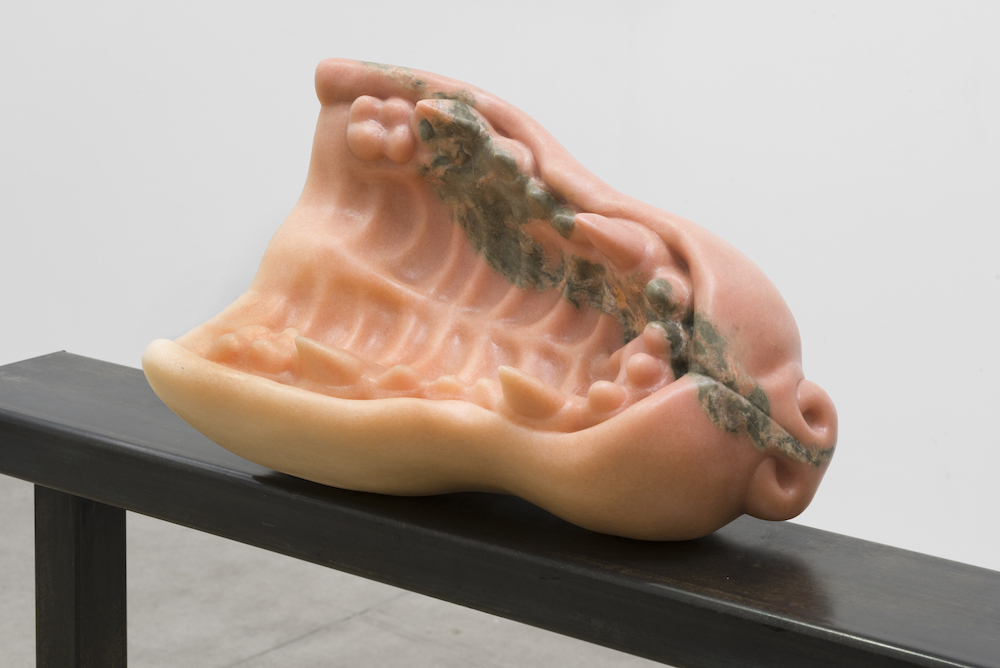Your cart is currently empty!
PEER REVIEW Fin Simonetti on Ambera Wellmann

A stone sculptor and stained-glass artist (among many other things), Fin Simonetti approaches demanding classical mediums with cultural critique and tender ambiguity. The New York–based Canadian artist has become known for her stone carvings of canine body parts—such as muzzled busts, paws and jaws—as well as her stained-glass structures, which include bear traps and sanctuary-like miniature houses. Honoring her creativity and dedication to her painstaking craft, Simonetti shows something different with each of her exhibitions; her upcoming show at Matthew Brown Los Angeles, which will involve new materials, opens in October. In this first iteration of “Peer Review,” we invited Simonetti to talk about the work of any artist of her choice.
I was excited to see Ambera Wellmann’s recent exhibition “Antipoem” at Fondazione Sandretto Re Rebaudengo in Turin since the works remind me of one of my favorite genres of historical painting—Doom paintings. Medieval depictions of the Last Judgment, Dooms typically portray heaven and hell, packed with figures, demons, angels and animals—all collapsed into a dramatic, dense narrative. The paintings in “Antipoem” feel like they could be vignettes taken from one of these works, maybe Hans Memling’s 15th-century triptych The Last Judgment.
My favorite work in the show, For you beautiful ones my thought is not changeable (2023), has swirls of bright color in the background that I imagine as an incoming apocalypse, ready to swallow the arena of animal figures in the foreground. If the show were a sequence, this painting would be the first scene, as if a hellacious bomb has only just detonated, but not yet engulfed the landscape. While the other paintings are completely immersed in a hellworld, here you can see the chaos approaching—it’s only beginning to infringe on the space.

I’ve always admired the way Wellmann handles paint. Somehow she is able to depict hard objects with soft blurry brushstrokes and capture narrative and melodrama without any specificity. I love that her works are rich with allusions to art history; the name “Antipoem,” along with work titles drawn from Sappho, imply a collage of art and literary references.
Like Wellmann, my work sometimes includes religion and animals as subjects. Seeing work that approaches these themes in ways that are materially and conceptually very different from mine allows me to experience my interests more like a consumer—that distance allows me to be more of a pure viewer, which is a treat.
—As told to Alex Garner